Header image: Screen from August Light, credit Gavin Rudy and Strictly
That fall, usually after a few beers, the inevitable conversation would come up. It’s a conversation that nearly everyone who's spent a lot of time skiing will recognize. The conversation always starts like this, “dude, we should totally make an edit this year”. Maintaining this sort of hype off the hill is easy, especially when it's 1 in the morning, and the whole crew is one round away from pitching start-up business ideas. Once all the challenges of producing a ski crystallize, though, it gets more difficult. But, during the 2017/2018 winter, me and my friend JP forged on, determined to push beyond the ski movie honeymoon phase. I fought with my A6000, stood around shooting video when I wanted to ski, and tried to figure out the only free editing software I could find, DaVinci Resolve. The result? A 30 second half baked video part where every shot is either overexposed or my lens is noticeably dirty, which, for better or worse, is set to a song by Lil Peep. Not necessarily a failure, but certainly not a success. Our efforts joined those countless others who almost made a ski video.
Luckily, there are plenty of people who have managed to figure this whole videography thing out. At some point in their lives they picked up a camera, kept filming as much as they could, and eventually accumulated enough knowledge to begin producing their own polished video parts. Over the past month I tracked down a number of these ski filmers and spoke with them to glean as much insight as I could. When the research was done I’d spoken to four: Owen Dahlberg (recipient of an IF3 award for his project Magma II), Laura Obermeyer (director/videographer behind Jyosei), Andrew Mildenberger (one half of the original pair behind the production company Strictly), and Gavin Rudy (the other half of Strictly). What follows is a selection of their stories, collective insight, and advice into the filming process. Read on if you’ve always wanted to make a ski movie of your own but have never been quite sure how to make it happen.
https://www.newschoolers.com/videos/watch/1024449/2017-2018
The edit that almost was
Trust Serendipity
Many of the filmmakers I spoke with for this piece noted just how easy it is to get completely lost in the planning process and become so paralyzed by getting everything right that your camera never leaves its respective place on the nightstand. So, instead of wasting away in limbo, trust that unexpected serendipity will likely contribute to the success of your project once you get started. Gavin told me the story of how some unexpected help from his friend Patrick Ring (another skier/filmer) aided in the completion of August Light, one of Strictly’s three releases this fall. “That was sort of a part of the movie that just fell into place because he just was there and willing to do it with us. So we just did it. But there was no planning that went into that at all. Like I barely knew PRing at the beginning of last year and he turned out to be one of the homies who was one of the biggest roles in making the urban side of the video come together and I just didn’t even expect that”, Gavin said.
You never know who might come out of the woodwork and pitch in to make a video come together. This approach, one that emphasizes looseness rather than rigid control in the videography process, is a hallmark of Gavin’s style. “I think the process for most of the years has sort of been like, the goal is to just go out and film the skiing and have ideas about ways that you can bring it together but not have the video planned out in any real sense”, he told me.
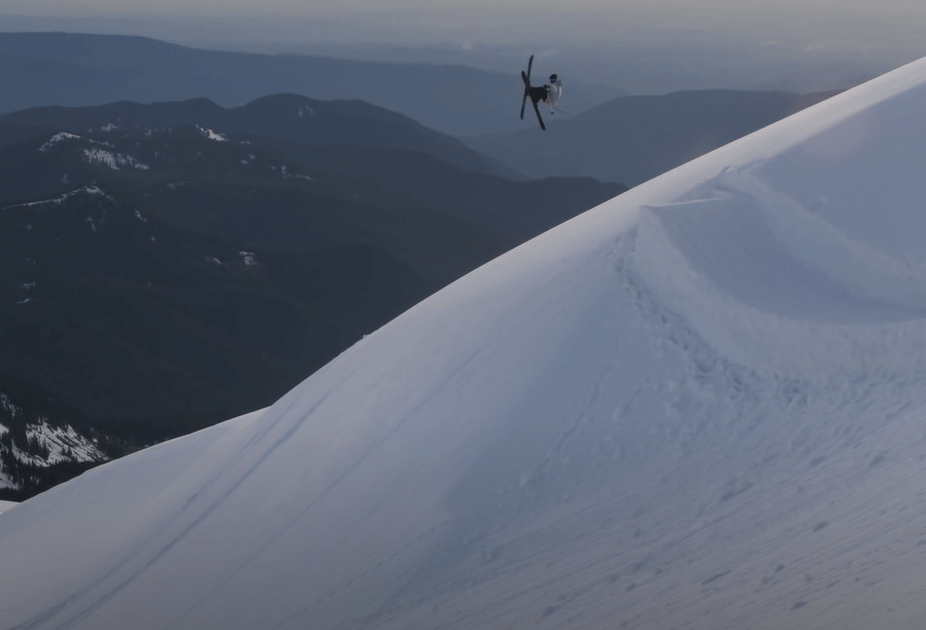
Screen from August Light, credit Strictly, Gavin Rudy, and Ethan Swadburg
Go Out and Shoot With What You Have
This one amounts to just picking up your camera and getting out there. Owen explained to me that despite the apparent inaccessibility of videography, there are tons of simple ways to get started. “Even if you don’t have money for a nice camera, just start making iPhone edits you know, like just getting that process flowing in your head of like knowing like, you know, all right, I wanna get this angle, I wanna match it up with this music, get these shots with these, you know, and not worrying about your set up and start worrying about what your shooting, is like my biggest thing”, he said. It’s super easy to convince yourself that you can’t start making videos because you don’t have a nice camera, but, in reality, the key to making a good part is practice and experience.
Gavin’s insight parroted Owen’s. While we did spend some time discussing the technicalities of gear, hearing him speak about the filming process made it abundantly clear to me that the camera is merely a tool. Gavin ran me through a constructive line of questioning that he employs while reviewing his clips, “think about what you want to capture and why you want to capture it that way and like, keep reviewing that with every shot. And seeing like, did I capture the things that I think are important for this clip”, he said. Focusing on this line of questioning will improve your work far quicker than obsessing over megapixels, or dynamic range.
Know Your Gear
Sure, worrying about your gear might sound counterproductive based on the previous point of advice, but many of the filmers I chatted with acknowledged the importance of knowing your gear's capabilities. Andrew informed me that if you're shooting with a mirrorless camera, a DSLR, or a higher-end camcorder, it’s critical that you build an understanding of terms like aperture, exposure, and frame rate, among many, many others. This knowledge is necessarily supplemented by information regarding the export process (moving your shots from camera to computer), and a working expertise in video editing software. Andrew pointed out that your shots, no matter how flawless you captured them in camera, won’t look professional as a finished product if you don’t dedicate some time to being a gearhead.
Gavin, too, before suggesting that shooting as much as possible with whatever you have is the best way to get started, informed me that gathering some gear knowledge will go a long way. However, there are plenty of camera models that don’t require a whole lot of technical knowhow to use, like iPhones, or cheaper camcorders, and the usage of these simple pieces of gear can help you learn basic shot composition and editing before you start getting into the nitty gritty. Laura, when asked, told me that one of her favorite cameras to shoot with is a simple Sony camcorder (a statement which comes from someone well versed in high end gear).
Owen also mentioned that he received zero formal videography education. Everything technical he’s learned has come as a natural byproduct of shooting video and learning along the way. So, perhaps the best way to surmount the seemingly impenetrable wall of technical gear knowledge comes back to the previous piece of advice; just get out there and get started. Many of the finer details will fall into place as you expand your skill set.
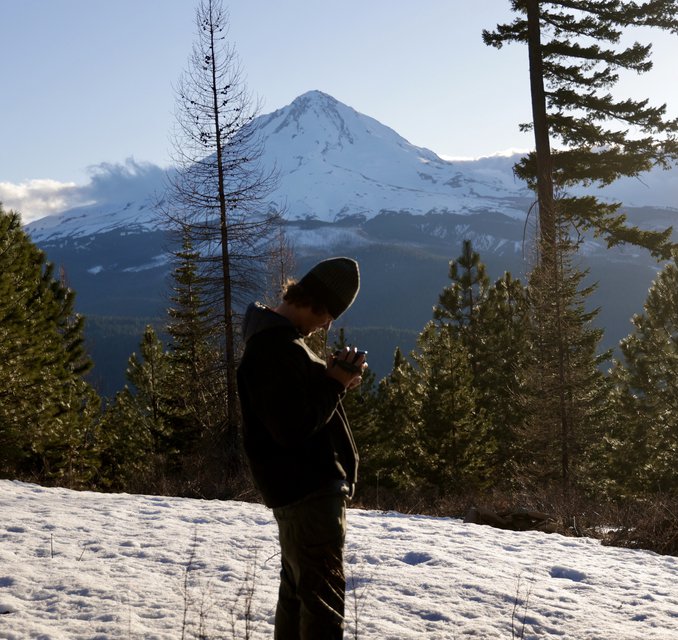
Gavin Rudy shooting a camcorder
Use Community Information Resources
You’ve made the plunge and cashed out on an expensive mirrorless cam and a set of lenses. You're shooting a lot, but everything looks like garbage, and you have no idea where in the workflow things are getting screwed up. Is my exposure wrong? Am I shooting video in the wrong format? Am I color grading incorrectly? Should I buy a gimbal? These questions run through your head and you’re feeling a bit lost. Gavin had a great piece of advice should you find yourself in this situation, “use resources that you have if you're getting into filming and you don't know what you're doing because these days, for sure there’s somebody you know, who is lit at filming or editing or something”, he said. If there’s anything I’ve learned throughout the process of writing this article it’s that people get super stoked on other people’s stoke. If you’re excited about filming and need a little help along the way, just ask. The skiing community is tight knit, and for the most part people want to help others succeed. Reach out to that local filmer who’s crushing and send them a few questions, it’s almost a guarantee they’d love to help you out. And, failing that, there’s a ton of info available in the Newschoolers media forum.
Find Your Style Through Inspiration
Crews across the world are taking full advantage of the democratized online sphere to put out content on their terms alone. This means that there’s no shortage of work to draw inspiration from. If you’re feeling lost about the direction you’d like your videos to go in, turn to this growing resource. And ski videos aren’t the only place that can get the creative juices flowing, “I get a lot of inspiration from music, like DJ sets and then also, just like certain producers and sort of pick up on these like auditory ideas about how they assemble their music or their sets and then I can like, find visual analogues to those ideas and sort of experiment with these with these concepts that I feel like I can get inspiration from”, Gavin said. He prefaced this process of building a collage of inspiration with a word of caution, though, saying that it’s important to not reproduce another crew's work shot for shot. Instead, take the elements that you like and throw your own spin on them. Similarly, the more avenues that you draw inspiration from the less prone you are to outright ripping someone off. While Gavin mentioned music, anything’s on the table here, non-ski movies, books, poetry, the natural landscape, the more you look the more you’ll realize that just about anything can kickstart the search for your own unique style.
Camera selection is an important part of a filmer’s style, too. You can build an understanding of which cameras produce which looks, and use this knowledge to inform your next purchase. As a general rule, mirrorless cameras and DSLRs are necessary to achieve the classic ‘clean’ ski movie look (most of the Strictly movies were shot on Panasonic GH5s, or, more recently, for Wildcard, a Panasonic S1H), and the grittier handheld look comes from the handheld camcorder style of cameras, like a Panasonic AC160 (Owen’s current camera of choice). Some filmers opt for a blend of the clean and the gritty. For August Light, which dropped this fall, Gavin used a GH5 (mirrorless), a Panasonic AC160 (high end camcorder), and a selection of older camcorders (which provide the grittiest look of all, save for cameras that shoot in film formats like 16mm) in a variety of video formats.
Stay Warm
At some point in every interview I asked a question that went something like this, “what advice do you have for someone who’s excited about getting into filming but isn’t sure how to start?”. Most of the filmers suggested that shooting as much as possible is the single most important piece of advice, but not Laura. When asked that aforementioned question she replied with one sentence, saying “invest in some warmer boots”. I laughed, thinking it was a joke, but she doubled down, “if you get cold you’re gonna hate it. That enthusiasm is gonna die immediately. It’s like teaching a little kid how to ski, if they’re cold and miserable they’re not gonna have a good time. If you go to film a spot for the first few times and you're miserable you’re not gonna want to do it”. It’s incredibly easy to miscalculate the layering necessary for standing around in the cold all day. Getting the shot can take hours, and as skiers we’re used to getting our core body temperatures up through physical activity. When you’re filming, you don’t have this benefit.
Laura offered another key piece of advice for maintaining camera battery charge; buy a heated chalk bag (Black Diamond makes a kick ass option for this). Camera batteries are prone to crapping out in the cold, and if you store them in a warm place you can save yourself the heartache of a dead battery at an inopportune time.
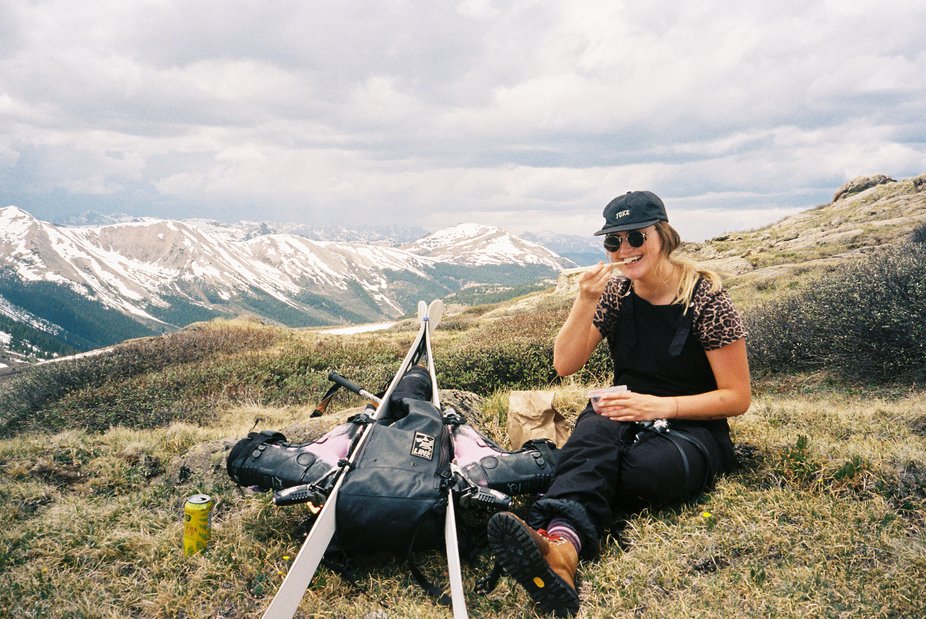
Laura Obermeyer, credit Annika Furman
Take Charge
Every young crew of rippers fantasizes about getting the guys and gals together to make a cranking part, but so few gather the motivation make it happen. Owen had some advice to help circumvent this issue, “I think as a filmer it’s definitely very important that you take on that role of being almost like the ringleader, a little bit like, not the leader, but like you gotta be in charge a little bit, and be like ‘I think it would be sick if you did that trick’, you know?” he said. Taking on this leadership role can mean scoping urban spots, having backup options, tracking the weather, organizing trips, or something as simple as putting together a crew group chat. Whatever form it takes, though, operating as the designated crew cat herder pays dividends. As a filmer this responsibility can often land in your lap, so it’s on you to shoulder it rather than shirk it. Your buddies will thank you for not only pointing the lens, but also for doing the homework to get the ball rolling.
Make Mistakes
Another piece of advice Laura offered was this, “I think it’s really important to make bad art, like even if you suck at filming and you really enjoy it, you should still be doing it because any method of being creative is so sorely needed, especially in skiing”. Just about everyone else agreed that the road to becoming a filmmaker is paved by ceaseless errors and what Laura describes as “bad art”. Oftentimes this looks like blown shots, but in other cases it can manifest as logistical errors, or bad luck. For instance, while filming in Hood, Owen was posted by a rail to get a shot when a skier flew overhead, executed a flawless cork three, and clipped Owen’s camera before landing and riding away. In the aftermath Owen was left with a cracked lens and a busted gimbal, which made filming impossible until he replaced the damaged gear. He also spoke of another summer where he couldn’t stop crashing with his camera in his hands on his way down to the jump lanes.
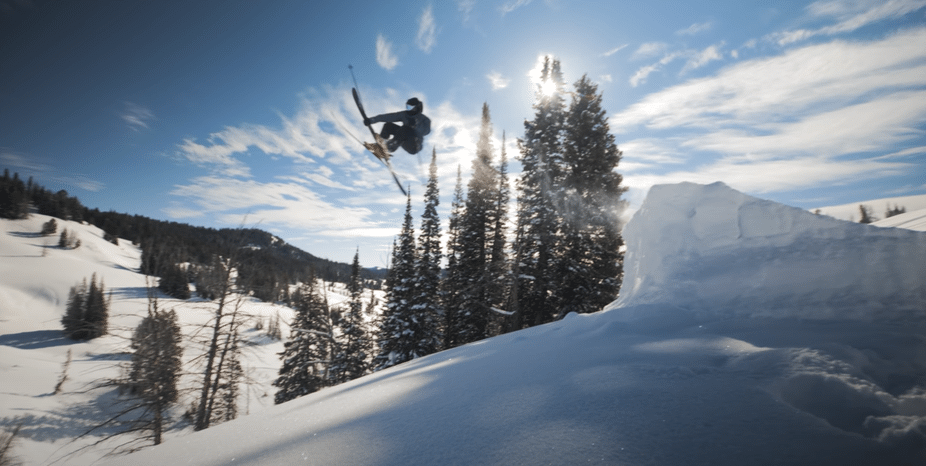
Screen from Wildcard, credit Strictly, Andrew Mildenberger
Andrew offered another such story where he brought a set of nearly dead batteries to a jump spot, and completely blew a shot of a flawless double back by Parker Norvell when the camera crapped out mid-shot. As you can probably guess, Andrew has had a difficult time living that mistake down. While it made excellent fodder for an enduring inside joke amongst his friends, it also taught a specific lesson about preparedness for filming. Low quality shots teach a similar lesson through repetition, the more “bad art” you make the closer you get to making “good art”. Plus, if you enjoy filming, you get to have a ton of fun with your friends along the way.
In the end, this may be the most potent piece of advice I received. While there are loads of elements to master in the filmmaking process, truly the best way to get into it is to just start. Everyone couched their responses in this notion. Sure, you’ve got to learn your gear. And, of course, you need to find ways to rally and organize the crew. But you can’t let all those considerations become too daunting. I think Owen might have summed it up best, “If you want that shot, like go for it, you know. Don’t be scared to get in there”.

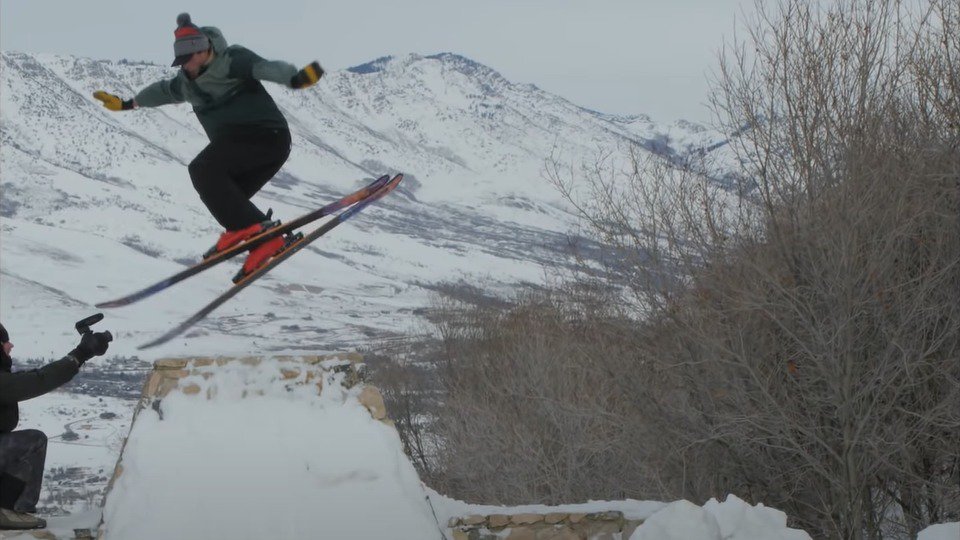
Comments